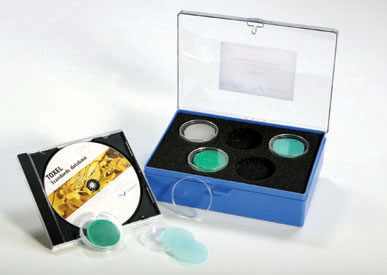Apr 21 2005

TOXEL - Helping the Polymer and Plastics Industry to Comply with WEEE and RoHS
Plastics are indispensable to countless areas of industry and commerce, particularly the building sector, packaging and furniture, household appliances, toys, electronic/computer products, and the automotive industry.
Although resistant to many chemicals and water, plastics are relatively unstable with regard to heat and light. To counter this, elements such as Pb, Cd, Cr, Hg, Br, Sn, Sb and Ti are added to the polymers as UV stabilizers, pigments, fillers and flame retardants. Plastics are thus a mixture of compounds that can be hazardous or carcinogenic to human and wildlife.
New regulations
Consequently, polymer and plastics manufacturers are subject to increasing and stringent legislation regarding the production of plastics.
Most of the new regulation is made by the European Union. In recent years it has introduced measures including the Packaging Directive, the broad Restriction of Hazardous Substances (RoHS) directive and the End-of-Life Vehicles (ELV) directive. Now, with the WEEE (Waste Electrical and Electronic Equipment) directive, the EU requires manufacturers to organize the collection and proper recycling of their old computers. It also indicates that all batteries need to be removed from that waste.
The aim of all this regulation is to reduce the use of heavy metals at source, then recycle as much as possible to avoid the problems associated with disposal. Manufacturers exporting to countries where these regulations apply have no alternative but to comply with them, and such countries already check the heavy metals content of goods in customs.
Compliance through analysis
To comply with these new regulations, plastics manufacturers require precise and repeatable measurements of additives – at all stages of the production process. Currently, the European polymer industry needs to determine more than 60 chemical elements in polymer materials, in concentrations ranging from percent- down to ppm-levels.
When it is only necessary to verify the presence of heavy metals in the sample, qualitative analysis is sufficient. Modern computer programs such as PANalytical’s IQ+ or AutoQuantify, based on a physical description of the X-ray fluorescence processes, allow concentrations to be obtained from samples. In this case, standards similar to the unknown samples are not needed for calibration of a spectrometer.
In essence, these methods provide semi-quantitative analysis and are known as standardless analysis. However, such methods are inadequate when manufacturers are faced with strict new regulations that require all the accuracy and precision of trace level analysis.
Achieving trace level analysis with XRF
An analysis, in which the precise concentration of each analyte is established, is known as true quantitative analysis. To perform such analysis effectively, calibration standards that set the level of required accuracy and precision must be used to calibrate XRF spectrometers.
Where XRF analysis is concerned, standards are analyzed and intensities obtained. Subsequently, a calibration curve (X-ray intensity versus concentrations) for each analyte is determined. XRF spectrometers such as Axios or Epsilon 5, then compare the spectral intensities of unknown samples to those of known standards. These provide traceability to primary standards and reference materials such as those provided by National Institute of Standards and Technology (NIST) and other regulatory bodies.
TOXEL and PANalytical. A new standard for heavy metals in polyethylene
However, standards are not always available for particular type of analysis. It takes time to develop and certify standards, especially when new materials, regulations and directives are introduced. Establishing a standard for the analysis of toxic heavy metals in polyethylene in response to new regulations has been a perfect example.
PANalytical is pleased to announce a new set of standards for the analysis of toxic elements in polyethylene. The standards have been developed in close cooperation with DSM Resolve, a Polymer R&D laboratory with huge experience in quantitative analysis of trace elements in plastic products with XRF. The set of standards is available under the name of TOXEL and consists of 5 standards, one blank and four multi-element standards, containing heavy elements: Cr, Cd, Hg, Pb, As, Ni, Cu, Zn, Ba and Br, when compliance to WEEE and RoHS is required.
TOXEL and XRF
Establishing a calibration with TOXEL standards and Epsilon 5 or Axios spectrometers is simplified by the fact that XRF is essentially a multi-element technique. A single set of TOXEL calibration standards can be used to calibrate all regulated toxic elements, covering concentrations from trace level to a few hundreds of ppm.
The standards can be ordered via the PANalytical sales and service network.
PANalytical is delighted to have played a role in a process that provides plastics manufacturers with standards against which they can perform precise, trace analysis of toxic heavy metals in polyethylene.
And we have no doubt that the TOXEL standards, combined with PANalytical’s Epsilon 5 or Axios XRF spectrometers, will help plastics manufacturers to meet the challenges – and opportunities – involved with the manufacturing of plastics in the 21st century.
For more information on X-Ray Fluorescence, click here.
Posted April 21st, 2005